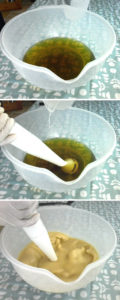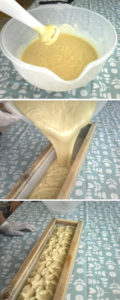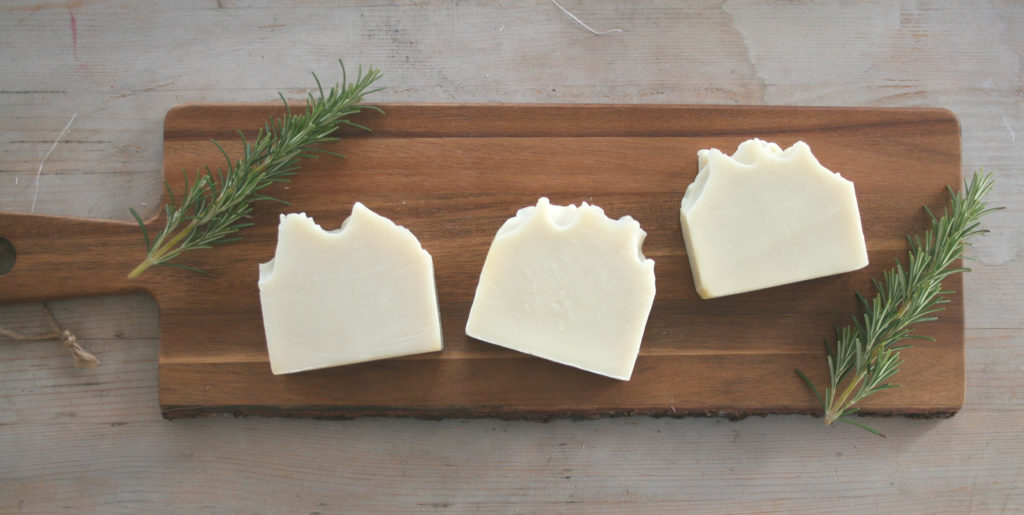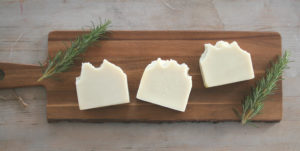I’ve heard of Castile soap but what is Bastile?
Everyone has heard of a Castile soap but most people who aren’t soap makers will probably never have heard of Bastile soap. The name is a soap maker’s fond reference to the fact that this is not a pure Castile soap and therefore Bastile has become the term (Think about a bastardised version of Castile!)
A Castile soap strictly speaking contains only 100% Olive oil as its oil component, even though many commercial manufacturers use all types of vegetable oils in their Castile soap. Bastile soap still contains a high percentage of olive oil but we add some extra oils in there too.
Why do we want other oils in our Olive oil soap? If you have ever tried a true 100% olive oil Castile soap you will know that it doesn’t lather very much. In fact, the lather can feel quite slippery and slimy. For some people, this is not a problem, but others prefer a more bubbly, less slippy lather. Adding other oils helps because all oils have different fatty acid profiles, that is they contain different fatty acids. Each different fatty acid makes a different type of soap, so having a mixture can help your bar to have a more rounded balance of characteristics.
In our case, we are going to add coconut oil to our olive oil. Adding coconut makes the lather much more bubbly and it complements the olive oil well. Coconut will make the bar harder in the short term so we can unmould reasonably quickly. A castile soap usually is quite soft when just made and so is difficult to remove from the mould. It might take a week to unmould. Our bastile soap will be ready to unmould the next day. A castile soap takes a long time to cure, at least 6 months. During this time it will become rock hard and very mild. Adding coconut speeds up this process and we should be able to use our bastile within 2 months (although longer is definitely better)
This is the recipe for our Naked soap so we are not going to add any colour and fragrance to this soap. You can if you like.
You can download a PDF of this recipe here Bastile Soap Recipe PDF
The recipe.
20% Coconut Oil
80% Olive Oil.
This recipe makes 774g (1.7lb) of soap before the cure. You can recalculate if your mould is a different size. Here is a helpful guide
So for 500g of oils, this will be as follows.
Coconut Oil 100g 3.5oz
Olive Oil 400g 14.2oz
Water 190g 6.7oz
Sodium Hydroxide (lye) 82g 2.9oz
You can add fragrance to this at 15g or 0.5oz if you like.
Please use either metric or imperial throughout this recipe as small adjustments have been made to ensure whole numbers.

Weigh your Sodium Hydroxide and your water. Add your Sodium Hydroxide to your water and stir. Do this in a well-ventilated area. Leave to cool until it is your preferred soap making temperature (I like room temperature best).
In a large bowl, melt your coconut oil and add the olive oil to it.
Pour your Sodium Hydroxide solution into the bowl containing the oils (make sure it is big enough).

Blend with a hand blender until you have reached ‘trace’.
Pour into a lined mould and leave to set for 24hrs or until it feels hard enough to unmould.
Texture or decorate the top of your soap however you like. I use a spoon to make soft peaks.
Cut into slices and leave for 6-8 weeks to cure (or longer if you have the patience)
This soap is so smooth and creamy. Perfect for all skin types including very sensitive and very young skin. As it has no allergens it can be used by anyone.
If you’d like to know more about the history of soap in general, including Castile soap check out this article
Before you attempt this recipe I recommend that you check out my free Beginners Guide to Cold Process soap available here.
Cold Process soap uses lye and is dangerous if you don’t know what you are doing. Please carefully read it before you begin.
If you try this recipe and like it, you can post your pictures over on the Facebook page. I’d love to see the results.


